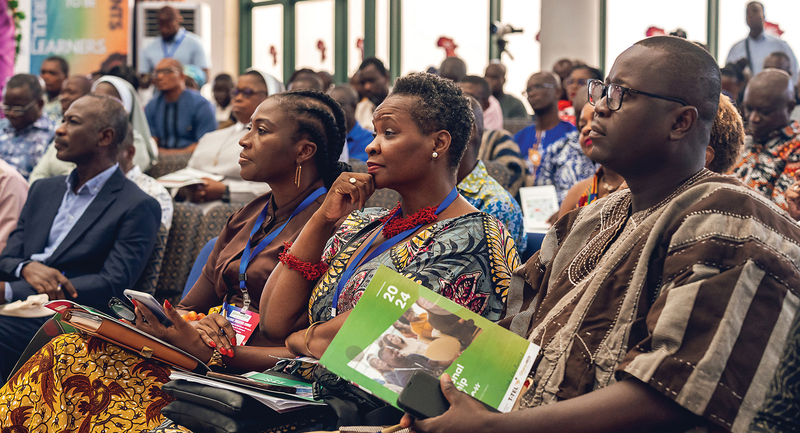As a faculty member in the Department of Teaching and Learning and a doctoral candidate at New York University, I find that my students, ranging from prospective teachers to aspiring policy makers, typically enter the semester bright-eyed and eager to affect the school politics of the future. But after a few weeks examining the way schools can perpetuate social and racial inequality, those eyes can dim.
My students begin to see the many barriers to establishing positive academic cultures and student identities. This is especially true for schools where the majority of students come from disadvantaged backgrounds and struggle as their social, emotional, and economic needs go unaddressed. In addition, research consistently finds that students of color from low-income backgrounds can find it more difficult to excel in academic settings due to implicit biases among school staff, regardless of students' academic potential (Carter, 2005; Delpit, 2012; Patterson & Fosse, 2015; Rist, 1970).
An English teacher may not recognize that a student's passion for creating vibrant rap lyrics is an indication of literacy, and if she—and the school leadership—are not aware of or able to counter their biases, they may fail to recognize student strengths and giftedness that manifest through various cultural forms, and may instead impulsively assess students on perceived weaknesses (Ford & Grantham, 2003; Gorski, 2011).
And yet, despite these challenges, there are schools that can—through hard work and persistence—instill a philosophy of high expectations and support for every student. There are schools where an energy and vibrancy can infect students and staff with a sense of pride and accomplishment, regardless of the students' backgrounds or differences from the mainstream. I know one teacher who recognized a student's interest in rap music and used his talent as motivation. She told him that if he got his grades up, she would let him perform in front of the school. He ended up getting good grades and a standing ovation.
So when my college students begin to doubt the effectiveness of schools to inspire and encourage, I take them on a field trip to two high schools in New York City that created cultures of support and vision for students who might be marginalized elsewhere.
Promise and Hope
At Medgar Evers College Prep in Brooklyn and The James Baldwin School in Manhattan, you feel something special the moment you walk through the doors. There is that inexplicable energy that exists wherever kids are learning.
Both of these high schools receive federal Title 1 funding, and all of their students qualify for free or reduced-price school meals. Nearly 100 percent of the students are minorities. Evers has a 91 percent graduation rate, with most students going on to college with scholarships. Baldwin, which is partnered with New York City Outward Bound Schools, graduates students on a rolling basis. Approximately half of Baldwin students are over the NYC Department of Education age range for secondary school and have transferred to Baldwin for a second chance at their diploma.
The vibrant cultures at Medgar Evers and James Baldwin are very clear on the surface. Both schools are adorned with colorful student work. Evers students wear a simple uniform of red or yellow polo shirts and slacks, and administrators warmly scold students to slow down and be tame in the hallways. Baldwin is more boisterous, with less enforced order. Students aren't reprimanded for having phones out in class; they're legally adults after all.
But there's more going on than meets the eye in these schools. Unified academic cultures that trickle down from administration, to teachers, to students, are not easy to create and certainly don't form overnight. Through my observations, I've learned there are many ingredients in the "secret sauce" that these schools use, and that one of the most important ingredients for shifting paradigms is visionary leadership.
Bridging Educational Expectations
Students of all backgrounds generally embrace the mainstream narrative that education opens doors, but they don't always believe it applies to themselves (Carter, 2005; Mickelson, 1990). Students' specific contexts can prevent them from developing the procedural knowledge to take advantage of school systems (Gorski, 2011; Kundu, 2017; Mickelson, 1990; Patterson & Fosse, 2015). Rosalyn Mickelson's (1990) work indicates that students have both abstract and concrete views of education—abstractly, they believe the American meritocratic premise that schools provide opportunity for all. But their own achievement is more closely tied to their concrete realities—whether their parents graduated and have fond memories of school or whether their peers are succeeding or dropping out. Students with disadvantages justifiably may not believe that education works for them the way it does for more advantaged students.
To create a school climate that's conducive to the success of students with various challenges requires a fundamental belief in all students' potential. Even in psychology, it is understood that a student's grit and mindset toward academics are not simply inheritable, but malleable under the right environmental contexts (Duckworth, 2016; Dweck, 2006). Thinking "not those kids" is a cop-out that the leadership at Evers and Baldwin do not find acceptable. The staff of these schools chooses to be boldly optimistic and confident. They are unified in their tireless efforts to set high expectations, but also to create the opportunities that allow students to meet them.
Curriculum and Cultural Competency
If all students believe in the idea of education, educators need to both strengthen and build upon that foundation. Evers and Baldwin are each named after an iconic black civil rights activist and leader. Principals and teachers remind their students of this frequently, and students are taught to uphold the civic responsibilities that come from the power of education. They partake in community service efforts throughout the city, and are also able to tell visitors—as they have told me—what the contributions of Evers and Baldwin were to American society.
Academic success and achievement are also paramount to both these schools' missions. Middle-schoolers and freshmen at Evers partake in mandatory summer school with the option of weekend tutoring. Starting in 10th grade, students are encouraged to take AP courses (21 APs are offered). Students can earn up to 11 college credits each semester starting in 11th grade. Some graduate high school with associate's degrees in hand. In addition to Ivy League schools, Evers proudly sends their grads to historically black colleges and universities.
For the transfer students at James Baldwin, high school might not have worked out the first time. Courses at Baldwin reflect what students want to take, but also what teachers want to teach (in addition to more standard core classes), including "The Origin of Racial Slavery," "Dracula and Gender Identity," and "Islamic Art and Mathematics." In summer 2016, I observed a class at Baldwin structured around Ta-Nehisi Coates's Between the World and Me. Given the vast underrepresentation of minorities in books and educational materials, these integrative approaches help struggling students to develop academic identities (Horning, Lindgren, & Schliesman, 2014).
Baldwin also requested and was granted a waiver from the New York State Regents Exams. Students instead prepare for comprehensive subject-area assessments. Students' exam papers are vetted through an academic review process with outside readers, made up from different school faculty, and students' defenses of those papers, which are presented colloquium-style. If students can't demonstrate competency in a subject, they must revise and resubmit. There is autonomy in letting students pursue their interests, as they come up with their own research questions and topics, with hope that these interests turn into lifelong passions.
Role Models and Social Support
When students are shown successful individuals from similar backgrounds, the effect can be incredibly powerful. Students can better visualize how success might look in their own lives when they relate to mentors (Rist, 1970). Evers and Baldwin both take advantage of the power of mentors by bringing in community experts to offer volunteer programming. Evers has a magazine editing and publishing course, which is taught by students and professionals from Medgar Evers College, and in this class students learn to publish their own editorials. Access to mentors from local colleges allows students to interact with mentors on a more peer-to-peer level. A student once told me, "We'd have students from NYU teach us the SATs. They were students of color. They looked like us, they sounded like us, and they were in college, doing big things. They were adults, they were cool, and we wanted to be just like them."
Most important are the role models that run the buildings. The teaching staffs at both schools are impressively diverse. Recent research shows that students of all backgrounds appreciate the presence of minority teachers, as these instructors may be more sensitive to students' cultural needs (Cherng & Halpin, 2016). School leadership should treat diversity as an asset when serving students from diverse backgrounds.
But it is also important to remember that the power of genuine relationships transcends race. The principal of James Baldwin is Brady Smith, a white male. A former student at the school told me:
He's the best principal anybody could have—the type where he'd be in the main hallway, everybody coming in, and he'd be there. Everybody's name, this man knew. "You're supposed to be in the 8:30 class, you'd better get there!" He knew everyone's schedule in his head.
Students take note and hold onto these memories beyond graduation. Such examples remind students that not only is success possible, it is expected.
Persistence, Unified
The students of Medgar Evers and James Baldwin are not just shown how to excel, but also taught to take ownership of their education. Some students commute upwards of 90 minutes each way to attend these schools because they know their academic and nonacademic needs will be met. And every morning the administrators, teachers, counselors, and advisors stand ready to greet them by name.
It takes persistence for a school to exhibit such a set of unified values. Once a failing school, Medgar Evers took more than a decade to turn around. It took undeterred leadership to create an academic culture that endured the tests of time. Principal Michael Wiltshire's intentions about the school's direction and growth were made clear to staff from the onset. He stated that the school would become more immersive, offering resources such as extra tutoring through extended school hours and even on weekends. Those who embraced and agreed with these changes in approach stayed on, creating a more unified teaching force.
Believe in the Potential for Change
The beneficiaries of the long process of changing the school culture are the students at Evers and Baldwin, who proudly identify as scholars. Through a combination of cultural and social supports, Evers and Baldwin students are taught to think critically about their world and to better understand their potential for change within it. Students learn to believe in themselves in the same way that the adults in their schools do.
We must challenge the normalization of failure. Instead of simply shutting down failing schools and pushing out failed students, we should take up the charge that education is our greatest collective responsibility. This requires communication and collaboration between school leaders and personnel, parents, community organizations, and even students themselves. We can start with the simple acknowledgment that, if they had the confidence and encouragement, all students would be interested in taking advantage of the many opportunities in their lives, and then help them imagine how to access those chances. Instead of giving up, we need to help students move up—by creating new and innovative pathways towards success.
When we believe in our students, we also believe in ourselves.








